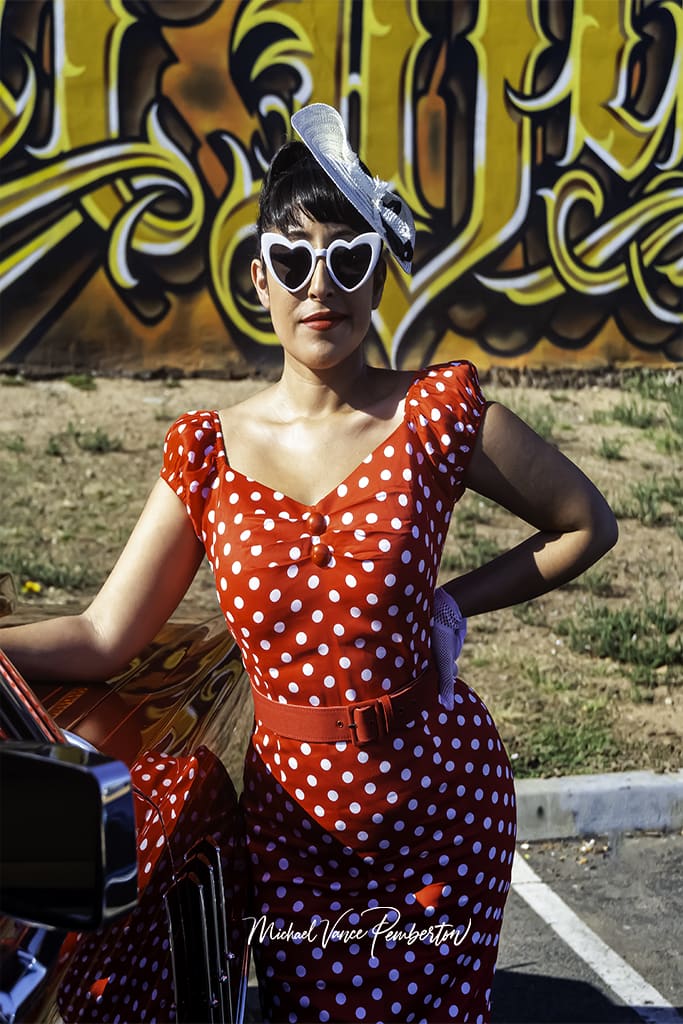Photography is a powerful medium that allows us to freeze moments in time, preserving memories and emotions for future generations. When photographing people outdoors, particularly under the blazing sun, the challenge lies in managing the intense light while achieving striking and natural-looking portraits. Whether you’re a professional photographer or an enthusiast with a camera, here’s your guide to mastering the art of photographing people in bright sunlight.
1. Timing is Everything.
The Magic of Timing: Embracing the Golden Hours in Outdoor Photography.
In outdoor photography, the art of capturing breathtaking images goes beyond just having the right equipment and technical know-how. One of the most influential factors that can truly transform your shots is the timing of your outdoor sessions. When the sun is at its zenith during midday, its intense rays create harsh contrasts and shadows that can distort the beauty of your subjects and the scenery around them.
In the pursuit of capturing portraits that exude grace and natural allure, avoiding the unforgiving midday sunlight is essential. At this time, the strong overhead light casts unappealing shadows on faces and causes subjects to squint and furrow their brows against the glaring brightness. These factors can lead to expressions that feel strained and artificial, diminishing the authenticity and charm of the photographs.
To truly elevate your outdoor portraits, you must be willing to work in harmony with nature’s rhythms. This means embracing what photographers call the “golden hours.” These are the precious moments shortly after sunrise and just before sunset when the sun’s position in the sky bathes the landscape in a warm, soft, and diffused light.
The allure of the golden hours lies not only in the luminous quality of the light but also in the magical atmosphere they create. As the sun hangs low on the horizon, its rays must travel through more of the Earth’s atmosphere, scattering the blue and green wavelengths and allowing the warm tones to dominate the scene. This results in a delightful palette of golden hues that add a touch of enchantment to your photographs.
During these hours, the direction of the sunlight is more flattering to your subjects. With the sun positioned at a lower angle, the light gently skims across faces, minimizing harsh shadows and accentuating natural contours. This soft, even illumination adds a radiant glow to skin tones and reveals the intricate details in the surroundings, transforming ordinary scenes into captivating vistas.
Moreover, the ambiance of the golden hours has a remarkable effect on the overall mood of your photographs. The warm, inviting light evokes a sense of tranquility and nostalgia, adding a layer of emotional depth to your images. Whether photographing a serene landscape or an intimate portrait, the gentle hues of the golden hours infuse your work with an ethereal quality that’s hard to replicate at any other time of day.
In essence, the choice of timing in outdoor photography can mean the difference between mundane and extraordinary. By choosing to work during the golden hours, you’re not just taking advantage of optimal lighting conditions – you’re harnessing the essence of beauty that nature bestows upon the world for a brief moment each day. So, as the sun paints the sky in hues of gold and amber, seize the opportunity to create photographs imbued with the natural world’s captivating splendor.

2. Find the Right Location.
The Dance of Light and Location: Crafting Perfect Outdoor Portraits.
In outdoor photography, the choice of location is akin to selecting a canvas for your masterpiece. Every element within the frame – from the backdrop to the foreground – contributes to the final narrative of the photograph. Among these elements, the interplay of light and shadow takes center stage, dictating the image’s mood, depth, and overall visual impact.
When crafting outdoor portraits that resonate with grace and authenticity, selecting the right location is pivotal. Beyond merely serving as a background, your chosen location becomes a collaborator in the photographic process, contributing unique characteristics to the visual story you wish to convey.
As you embark on the quest for the ideal location, one of the cardinal considerations is the availability of open shade. Open shade refers to areas where your subjects are shielded from direct sunlight by objects like buildings, trees, or cliffs. This natural canopy creates a soft, diffused light that wraps around your subjects, offering a gentle, flattering, and soothing embrace.
The importance of open shade lies in its ability to mitigate the harsh contrasts and sharp shadows often associated with direct sunlight. When the sun blazes overhead, it casts strong, unyielding shadows that can distort facial features and obstruct crucial details. Moreover, the intense light can lead to squinting eyes, adding an air of discomfort to the images.
In the sanctuary of open shade, these challenges are elegantly sidestepped. The diffuse light that filters through leaves or bounces off nearby surfaces bathes your subjects in an even, flattering glow. The contours of the face are softly accentuated, while the subtleties of expression are preserved with fidelity.
However, there are instances when shooting in direct sunlight is inevitable – perhaps the location demands it, or the narrative you’re crafting necessitates the brilliance of the midday sun. In such scenarios, ingenuity comes into play. Here, the judicious use of props becomes your secret weapon. Umbrellas, diffusers, and even large reflectors can be enlisted to transform the uncompromising light into a malleable force.
Umbrellas and diffusers act as guardians against the harsh sunlight. By positioning them strategically between the sun and your subjects, you create your own oasis of shade. The light that filters through these tools is tamed and diffused into a gentler, more manageable force that gracefully caresses the scene. This orchestrated manipulation of light adds an artistic touch to your photographs, sculpting them into captivating compositions that echo your creative vision.
In outdoor photography, the interplay of light and location is a ballet of contrasts – between the starkness of sunlight and the embracing shadows of open shade, between the raw and the refined. By thoughtfully choosing locations with available shade or ingeniously employing tools to craft your own shade, you orchestrate a symphony of light that transcends the ordinary and transforms your outdoor portraits into timeless works of art.

3. Mind Your Composition.
The Artistry of Composition: Guiding the Viewer’s Gaze in Bright Sunlight.
In photography, a well-composed image transcends the mere act of capturing a moment – it becomes a visual narrative that communicates emotions, stories, and aesthetics. Akin to a conductor orchestrating a symphony, the photographer wields the elements within the frame to create an arrangement that draws the viewer’s eye and tells a compelling tale. When capturing subjects amidst the intensity of bright sunlight, the mastery of composition takes on a whole new dimension, infusing the image with depth and intrigue.
At the heart of composition lies the venerable “rule of thirds,” a guiding principle that has withstood the test of time. Imagine superimposing a 3×3 grid over your frame, creating nine equal sections. This grid provides a canvas for strategically placing key elements, ensuring they neither crowd the frame nor feel isolated. Positioning your subject along these lines or at their intersections – known as “power points” – imbues the photograph with a harmonious balance that resonates with the human eye.
Adhering to the rule of thirds can work wonders when the sun is ablaze and shadows are stark. Placing your subject off-center allows the surroundings to contribute their voice to the composition, framing the narrative with context and enhancing the overall impact. This approach mitigates the potential for the harsh sunlight to overpower the scene, allowing the subject and its environment to harmonize effortlessly.
In the theater of bright sunlight, composition is not confined to the rule of thirds alone. Leading lines are invaluable tools guiding the viewer’s gaze through the frame. These lines, whether roads, paths, or architectural structures, act as visual highways, ushering the eye to the heart of the image. They instill a sense of movement and depth, encouraging the viewer to explore every nook and cranny within the photograph.
Natural elements also emerge as protagonists in the composition saga. Trees, rocks, and foliage can serve as framing devices that draw attention to the subject while also tempering the intensity of the sunlight. They provide a welcome respite for the eye, softening the scene and directing focus towards the subject’s expression and emotion.
Architectural structures, with their lines, angles, and geometric precision, offer a mesmerizing interplay between the organic and the constructed. When juxtaposed against the sun’s brilliance, these elements create captivating contrasts that lend an air of intrigue to the composition. Balconies, doorways, and arches transform into visual portals, inviting viewers to explore the story within.
In photography, the compositional journey is one of endless exploration and discovery. The interplay between light and subject, the orchestration of lines and angles, and the balance between natural and constructed elements create a visual tapestry that resonates with emotion and wonder. When seizing the opportunity to capture subjects in the glow of bright sunlight, composition becomes a guiding compass, ensuring that your images transcend the ordinary and capture the essence of the moment in its fullest splendor.

4. Control Exposure.
Photography, at its core, is the capture of light and its interplay with the world. Yet, in bright sunlight, this dance of light can become a complex choreography, challenging even the most seasoned photographers. The camera’s automatic settings, designed to simplify the process, may need help when faced with the intensity of sunlight, risking overexposed images devoid of the intricate details that give life to a photograph. To command the radiant essence of bright sunlight, one must embark on a journey of manual mastery, wielding the triumvirate of aperture, shutter speed, and ISO settings with artful precision.
Managing exposure amidst the brilliance of sunlight is akin to taming a wild element that can elevate your image to new heights or cast it into an abyss of overexposed oblivion. The automatic settings, while ingenious, often falter in the face of the sun’s might. Taking charge and transitioning into manual mode allows you to emerge as the conductor of the exposure symphony, harmonizing light and shadow to create an image that speaks volumes.
At the heart of this symphony is the ISO setting – the sensor’s sensitivity to light. In bright sunlight, dialing the ISO to a lower value is a strategic choice. This reduction minimizes noise and lends an air of ethereal clarity to your images. Values like ISO 100 or 200, reminiscent of film’s fine-grain elegance, ensure that even the most minute details are retained with fidelity, showcasing the textures and subtleties of the scene.
As the sun paints the world with brilliance, the shutter speed acts as your brushstroke, capturing the light in a fluid motion. In this scenario, your secret weapon is opting for a fast shutter speed. With the intensity of sunlight, a rapid response to light is crucial to maintaining the image’s integrity. A shutter speed of 1/500th of a second or faster encapsulates the vitality of the moment, preventing overexposure and preserving even the most fleeting nuances.
The aperture, a portal between light and sensor, becomes your artistic lever in this exposure balancing act. A larger aperture – represented by a smaller f-number – takes center stage in the bright sunlight ballet. This choice not only permits more light to flood the sensor but also ushers in the magic of a shallow depth of field. As you wield this creative wand, your subject emerges as the protagonist, sharply defined against a soft, dreamy backdrop. This exquisite interplay of focus and blur lends an artistic depth that elevates your image from the ordinary to the extraordinary.
In the luminous theater of bright sunlight, the mastery of exposure transforms the harsh light into a canvas for creative exploration. The triumvirate of aperture, shutter speed, and ISO settings becomes your toolkit, allowing you to sculpt light, shadow, and detail into a mesmerizing narrative. As you seize the reins of your camera, remember that the radiant and potent sun is your partner in this dance – an ally that, when harnessed artfully, can illuminate your images with a brilliance that captivates hearts and minds alike.
5. Use Fill Flash.
Taming the Light: The Art of Fill Flash in Balancing Sunlit Portraits.
Bright sunlight, with its luminous intensity, can paint landscapes with unparalleled brilliance. However, when it comes to portrait photography, this brilliance often casts intricate shadows on your subjects’ faces. These shadows, while natural, can sometimes be unflattering, obscuring the details and expressions that make a portrait come alive. In such scenarios, the strategic deployment of a fill flash emerges as a masterful tool, harmonizing the play of light and shadow to create portraits that radiate beauty and authenticity.
Fill flash is akin to being handed a magician’s wand that selectively illuminates the shadows without obliterating their existence. It’s an artful technique bridging the delicate tightrope between enhancement and preservation. By employing a burst of controlled light to “fill” the shadows, you retain the texture, contours, and character of the subject’s face while ensuring that their features are not obscured.
This technique becomes particularly invaluable when the sunlight is your primary light source, causing a stark contrast between the brightly lit areas and the shadows. A fill flash is a gentle mediator in these scenarios, bridging the gap between these extremes. Its purpose isn’t to replace the natural sunlight but to supplement it, allowing the subject’s features to shine through with clarity and vivacity that might otherwise be lost in the dance of light.
One of the prime applications of fill flash lies in combating backlighting, where the subject is positioned against a bright background, such as the sun or a bright sky. In such cases, without a fill flash, the subject often ends up silhouetted against the dazzling backdrop. However, introducing a controlled burst of flash ensures that the subject’s facial details are illuminated, maintaining the integrity of the portrait against the majestic backdrop.
Areas with high contrasts between light and shadow – such as sunlit streets or forest clearings – also present the perfect opportunity for fill flash to shine. The flash delicately balances the luminosity discrepancies, rendering a portrait rich in texture and nuance. The dappled light filtering through leaves or the dramatic interplay of light and shade on architectural elements becomes a canvas for your artistic interpretation.
Mastering the art of fill flash involves a nuanced understanding of the light, the camera, and the scene. The flash’s intensity, angle, and distance must be finessed to avoid creating an artificial appearance while achieving the desired illumination. When wielded with finesse, the fill flash transforms a potentially challenging lighting scenario into an opportunity for artistry, culminating in portraits that resonate with a natural and enchanting glow.
In the grand tapestry of photography, fill flash emerges as a stroke of mastery, allowing you to sculpt light to your creative vision. As you stand at the crossroads of bright sunlight and shadow, consider the fill flash your trusty companion, guiding you through the labyrinthine intricacies of light manipulation. The result? Portraits that transcend the limitations of light embody the spirit and essence of your subjects with unparalleled vibrancy.
6. Experiment with Angles.
Angles of Vision: Unveiling the Beauty of Perspective in Outdoor Photography.
In the realm of photography, the choice of perspective wields a profound influence over the final narrative of an image. It’s a magic wand that can sculpt the mood, emphasize the subject’s attributes, and unveil layers of artistic interpretation. When capturing subjects amidst the radiant embrace of the outdoors, manipulating angles becomes a powerful instrument, unlocking the potential for portraits that resonate with depth, emotion, and story.
The dance begins by embracing that not all perspectives are created equal. As you venture to capture the beauty of individuals amidst the splendor of bright sunlight, the quest for the most flattering viewpoint is an art in itself. Experimentation becomes your ally – a journey of discovery that uncovers the angles that enhance your subject’s features and narrative.
Shooting from a slightly elevated position is a strategic choice that can work wonders in banishing unflattering shadows. These shadows, often lurking beneath the chin and around the eyes, can distort facial features, casting an unintended gloom. However, by positioning yourself slightly above your subject, you transform these shadows into gentle accents, allowing the light to cascade across the face gracefully. The result is a portrait that exudes natural radiance, accentuating the subject’s charm without embellishment.
Conversely, the decision to shoot from a lower angle adds a dimension of drama and power to your portraits. The low vantage point grants your subjects an air of authority, infusing the images with strength and importance. In storytelling, this perspective is akin to giving your subject the spotlight on a grand stage, making them the central figure in a narrative that demands attention.
However, the mastery of angles extends beyond the subject alone. The background elements are vital players in this visual symphony, capable of adding depth and context to the composition. A lower angle, for instance, becomes a portal to the skies – a canvas for the vast expanse of blue that can lend an air of freedom and possibility to your images. In contrast, a higher angle shifts the focus to the landscape, emphasizing the relationship between your subject and their environment, revealing the story of their place within the world.
Ultimately, the choice of perspective in outdoor photography is akin to wielding a storyteller’s quill. It’s a deliberative act that shapes each image’s emotions, narrative, and impact. As you navigate the landscape drenched in bright sunlight, remember that every angle has a tale to tell. From the vantage of slightly elevated positions that caress the face with light to the low angles that infuse the scene with grandeur, your camera becomes a conduit for translating the world’s beauty into visual stories that resonate with the heart and soul.
7. Use Polarizing Filters.
Polarizing Filters: Unveiling the Magic in Outdoor Photography.
In the enchanting world of outdoor photography, the interplay of light and surfaces often defines the essence of an image. Yet, when the sun stands radiant and unyielding in the sky, these interactions can sometimes lead to challenges, such as glare and reflections. Enter the polarizing filter – a remarkable tool that serves as both a guardian and a sorcerer, transforming the very fabric of light to bestow your images with a magical quality that captivates the senses.
In bright sunlight, polarizing filters emerge as the unsung heroes that elevate your work from ordinary to extraordinary. Their charm lies in their ability to quell the disruptive effects of glare and reflections, creating a visual tapestry that brims with clarity and vibrancy. Surfaces like water, glass, and even leaves often become mirrors reflecting the sun’s brilliance, obscuring the details beneath. The polarizer intervenes, delicately curating the angles of light that reach your lens. It’s as if a magician’s hand has brushed across the scene, revealing hidden colors and textures that would otherwise remain concealed.
When the sunlight dances upon a tranquil lake or a cascading river, the polarizing filter becomes an alchemist, transforming the water’s surface into a canvas of rich hues and textures. The glare dissipates, and the reflections morph into captivating ripples, revealing a world below that shimmers with life. Similarly, when photographing through glass windows or against shiny surfaces, the polarizer’s touch unveils the scene’s essence, allowing your lens to peer through the reflections and connect with the subject’s heart.
However, the filter’s magic doesn’t stop there. It also has the uncanny ability to deepen the azure tapestry of the sky. As the polarizer twists, the skies respond – morphing from a bright cerulean to a more dramatic, deep blue expanse. This transformation enhances the backdrop of your outdoor portraits, adding a touch of artistic intrigue that elevates the visual impact. The contrast between the subject and the sky becomes more pronounced, setting the stage for a narrative imbued with emotion and awe.
In outdoor portraiture, the polarizing filter resembles a storyteller’s lens, imbuing your images with nuances that only light and perspective can reveal. It bridges the photographer’s vision and the sun’s brilliance, orchestrating a symphony of clarity, color, and contrast. Whether you’re capturing a tranquil landscape, a candid portrait, or the intricate details of nature, the polarizing filter stands as a game-changer. This instrument uncovers the magical subtleties that the human eye often overlooks.
8. Communicate with Your Subjects.
Forging Authentic Connections: The Heart of Portrait Photography.
Within portrait photography lies an art that surpasses technical skill – the ability to establish a genuine connection with your subjects. This connection is the bridge that transcends the lens, inviting the viewer to peer into the very soul of the individual captured in the frame. Amidst the radiance of bright sunlight, this connection becomes a catalyst, infusing your images with an authenticity that resonates far beyond the surface.
The process begins with guiding your subjects, creating an environment where they can unfold naturally before your lens. Instructing them to relax, interact, and be themselves lays the foundation for candid moments that emanate raw emotion. As the photographer, you set the stage for these unguarded moments to transpire. Encourage conversations, laughter, or contemplative gazes – these elements breathe life into your portraits, narrating stories that words could never encapsulate.
The impact of capturing natural expressions and emotions cannot be overstated. These genuine glimpses into the human experience evoke empathy and connection in the viewer. A smile that crinkles the eyes, a thoughtful expression, or even a carefree laugh – these fragments of existence resonate universally, transcending cultural and linguistic barriers. In the quest for the perfect portrait, these genuine moments possess the power to move hearts and evoke memories.
Transitioning to the technical side of outdoor portraiture, mastering the nuances of bright sunlight involves more than just maneuvering camera settings. It’s an intricate dance that fuses technical knowledge with artistic vision. The sun, a dynamic force, can be harnessed to amplify the narrative you wish to convey. The warmth of the “golden hours” can weave a tapestry of serenity, while the stark brilliance of midday sunlight can be sculpted into a canvas that showcases strength and vibrancy.
This mastery of light requires an intimate understanding of its nuances – how it casts shadows, illuminates textures, and interacts with every element within the frame. This deep comprehension empowers you to transform the harsh sunlight into a partner in the storytelling rather than a challenge to overcome.
As you venture into the great outdoors with your camera and creativity, the world becomes your canvas. With each click of the shutter, you’re not merely capturing subjects but weaving tales of life, emotion, and connection. So, seize the moment, embrace the sun’s brilliance, and let your images echo with the heartbeat of the human experience. In this exquisite dance of light, perspective, and emotion, you forge moments frozen in time, immortalizing the beauty of the natural world and the essence of the souls that inhabit it.
Conclusion:
Capturing Brilliance: Illuminating Outdoor Portraiture in Sunlight.
In photography, few challenges are as exhilarating as capturing portraits under the radiant embrace of bright sunlight. It’s a delicate dance between light and shadow, technical mastery and artistic vision. Through this journey, we’ve explored the intricate interplay of timing, location, composition, exposure, angles, and the profound human connection that breathes life into every frame.
As the sun casts its luminous spell upon the world, it’s not merely a matter of capturing subjects against a backdrop of brilliance. It’s about wielding light as a brushstroke, crafting narratives that resonate far beyond pixels and paper. It’s about seizing the opportunities presented by the golden hours or harnessing the intensity of midday sunlight to infuse your images with vitality.
Yet, amid the technical maneuvers and compositional strategies lies a treasure that surpasses all – the connection you establish with your subjects. The laughter, contemplation, and genuine emotions captured through your lens are the threads that weave a tapestry of humanity, transcending time and space. This connection transforms mere photographs into portals to memories, emotions, and stories.
So, as you venture into the great outdoors armed with your camera and creativity, remember that you’re not just photographing people in bright sunlight. You’re capturing the essence of life illuminated by the sun’s brilliance. Each frame you compose is an invitation to celebrate the beauty of the natural world and the stories that dwell within it – stories of strength, vulnerability, joy, and introspection. So, embrace the challenge, bask in the glow of inspiration, and let your lens unfold a symphony of light that echoes the radiance of the human spirit.


Recent Posts
In shadows cast by love's deceitful guise,He wandered blind, his heart the captive prize.Through realms unknown, where truth remained concealed,He followed trails of falsehood, unrevealed. Blinded...
Prepare to be amazed as the MCAS Cherry Point Air Show returns on May 11-12. This annual event, hosted by the Marine Corps Air Station (MCAS) Cherry Point in North Carolina, promises a weekend of...




